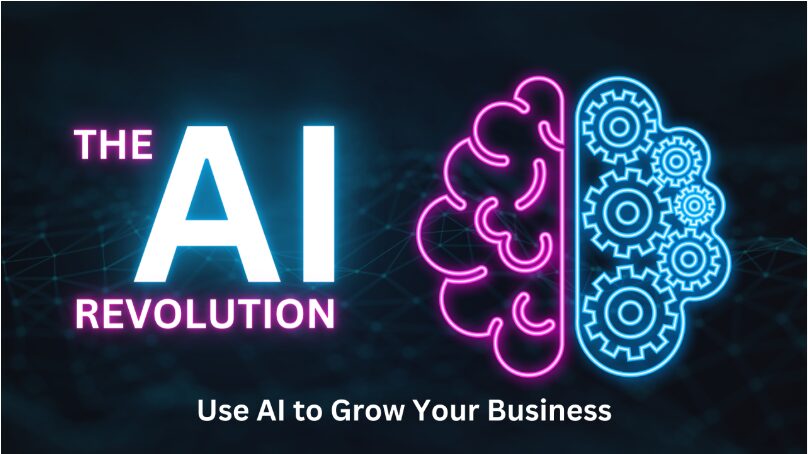Key Takeaways
- Predictive analytics, AI, and machine learning drive growing efficiency and proactivity in maintenance initiatives.
- Challenges in AI implementation highlight the need for strategic planning and investment in workforce development.
- Successful case studies from various industries reveal the practical benefits and performance enhancements gained from AI adoption in maintenance.
Adhering to best practices in technology selection, data management, and workforce training is crucial for harnessing the potential of AI in maintenance. In today’s fast-paced industrial environment, maintaining operational efficiency while managing the complex intricacies of machinery and equipment is paramount. One of the most significant advances in modern maintenance practices is introducing and applying AI-driven strategies. These innovative approaches offer a proactive stance towards maintenance that boasts enhanced decision-making capabilities, predictive maintenance scheduling, and improved asset performance management software. The intelligent use of data and machine learning algorithms prevents costly downtimes and reshapes the future of asset management in various sectors.
The Rise of AI-Driven Maintenance
As artificial intelligence permeates the commercial sector, industry maintenance practices transform. Asset performance management software, driven by AI technology, revolutionizes maintenance protocols by providing a holistic perspective on asset health. Through in-depth analysis of extensive datasets encompassing machine utilization, operational parameters, and maintenance records, AI-enabled systems offer unparalleled insights. These insights empower organizations to optimize maintenance schedules, anticipate potential failures, and minimize unnecessary interventions. Consequently, the integrity and longevity of critical equipment are preserved, leading to enhanced operational efficiency and cost savings. The integration of AI-driven asset performance management software marks a paradigmatic advancement, enabling organizations to proactively manage assets and elevate their maintenance practices to unprecedented levels of precision and reliability.
Data-Driven Decision-Making in Maintenance
The unprecedented ability of AI to analyze and learn from data transforms how organizations conduct maintenance. With algorithms capable of dissecting patterns from seemingly unrelated data points, maintenance teams can move away from standardized practices towards more individualized approaches. This degree of data-driven decision-making enables a more accurate understanding of each asset’s status, resulting in more efficient resource allocation and fewer unjustified production line interruptions from maintenance tasks.
Predictive Analytics: A Proactive Approach to Maintenance
Predictive analytics is rapidly becoming the gold standard in maintenance strategies. This approach uses machine learning and statistical algorithms to forecast future events based on past data. An effective predictive maintenance plan reduces the risk of unexpected equipment failures and production downtime. By utilizing this approach, maintenance can be performed at just the right juncture, saving time and resources while maximizing asset uptime and longevity. The potential of predictive analytics in maintenance is further delineated by authoritative sources in the field, such as the detailed analysis provided by Plant Engineering.
The Transformative Impact of Machine Learning on Maintenance
Machine learning is bending the arc of maintenance practice towards a more intelligent future. Algorithms designed to learn and improve continually refine the models that predict equipment failure and suggest maintenance actions. They master the art of deciphering complex patterns and anomalies that typically elude human analysis, providing decision-makers with powerful tools to enhance efficiency and reduce operational risks. The deployment of such technology means maintenance teams can rely less on intuition and more on complex data and predictive insights, signaling a radical improvement in maintenance activities and asset performance.
Challenges and Solutions in Implementing AI in Maintenance
While the trajectory of AI in maintenance is studded with promise, its implementation is often accompanied by an array of challenges. These include the initial significant investment, the requirement for an organizational culture shift to embrace digital transformation, and worries about personnel upskilling and data privacy. Outfitting existing infrastructure to support AI functionality often requires technological and strategic adjustments. Nevertheless, forward-thinking companies are finding ways to address these issues, focusing on long-term benefits such as cost reduction, improved safety, and enhanced asset performance. This creates a pathway that others can follow, paving the way for the widespread adoption of AI in maintenance practices across industries.
Case Studies: Successful AI Maintenance Strategies
Diverse industries steadily showcase the advantages of integrating AI into their maintenance strategies. Notable examples include the aviation sector, where predictive analytics is employed to predict engine component failures before they occur, allowing for timely maintenance that ensures passenger safety and service continuity. Similarly, AI systems are being applied in manufacturing to monitor machines in real time, promptly identifying issues that could lead to breakdowns or production bottlenecks. These examples serve as case studies for the successful application of AI in maintenance strategies, underscoring the tangible benefits of adopting intelligent, data-driven systems.
Future Trends in Maintenance Technology
The potential of AI in transforming maintenance strategies is far from fully realized, with future trends hinting at an even more interconnected and intelligent maintenance ecosystem. Continued advancements in AI and developments in the Internet of Things (IoT) are expected to lead to even more sophisticated predictive analytics tools. There’s also speculation about an increased role for autonomous systems, such as drones for inspections and robots for repairs, which would significantly improve safety and efficiency.
Best Practices for Adoption of AI Maintenance Solutions
The journey towards an AI-powered maintenance protocol necessitates a structured approach. Best practices in this regard include:
- Selecting tools and platforms that offer scalability.
- Investing in high-quality training for the maintenance workforce to ensure skills are aligned with new technologies.
- Fostering a culture of continuous improvement.
Organizations prioritizing these aspects can develop a sustainable and effective maintenance strategy leveraging the full spectrum of AI capabilities. By adhering to these principles, the integration of AI into maintenance will be viable and offer a significant competitive advantage in operational efficiency.




